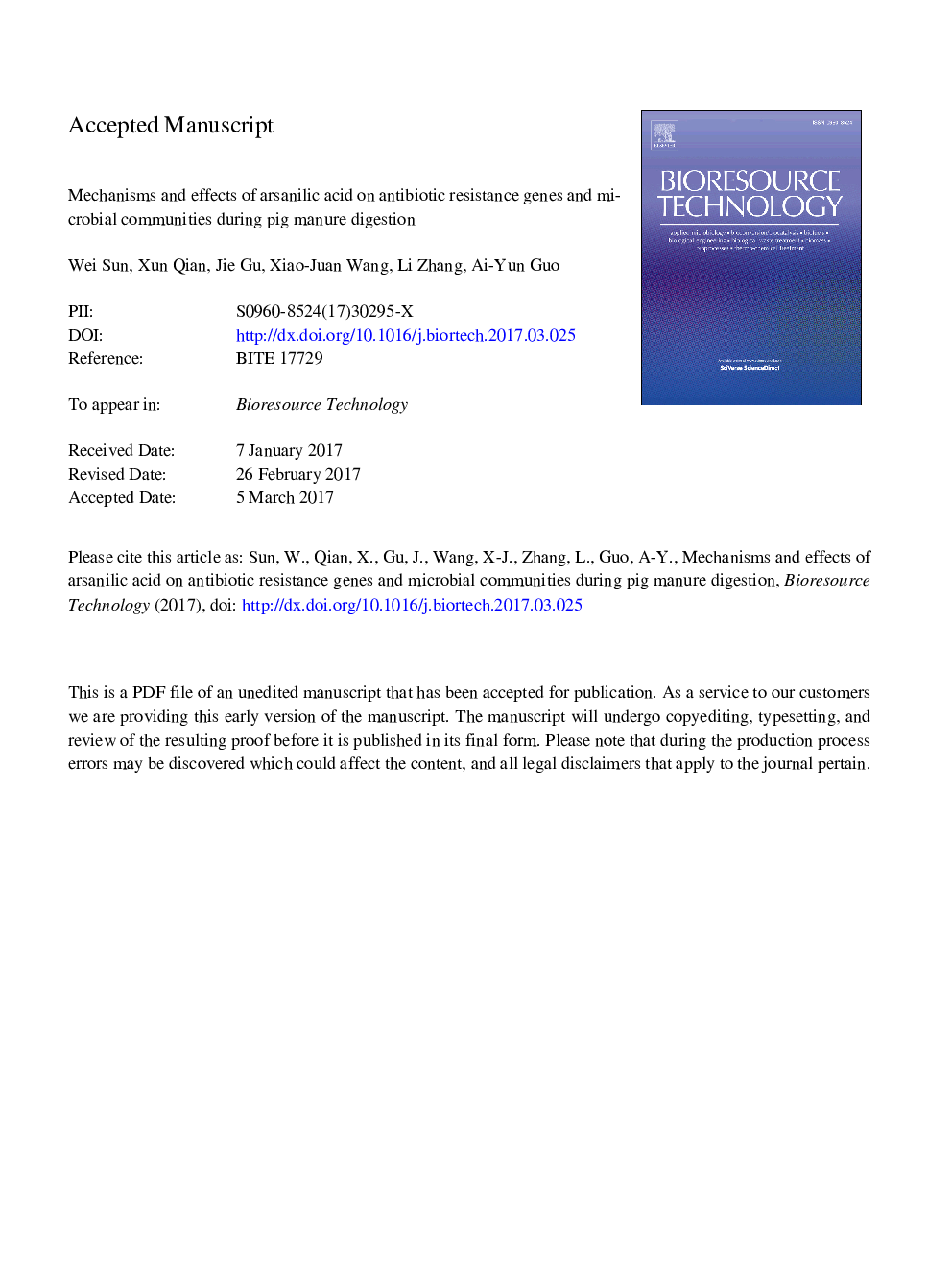| Article ID | Journal | Published Year | Pages | File Type |
|---|---|---|---|---|
| 4997300 | Bioresource Technology | 2017 | 29 Pages |
Abstract
High concentrations of residual arsanilic acid occur in pig manure due to its use in feed to promote growth and control diseases. This study compared the effects of arsanilic acid at three concentrations (0, 325, and 650Â mg/kg dry pig manure) on the abundance of antibiotic resistance genes (ARGs) and the microbial community during anaerobic digestion. Addition of 650Â mg/kg arsanilic acid enhanced the absolute abundances of tetC, sul2, ermB, and gyrA more than twofold in the digestion product. Redundancy analysis indicated that the change in the microbial community structure was the main driver of variation in the ARGs profile. The As resistance gene arsC co-occurred with four ARGs and intI1, possibly causing the increase in ARGs under pressure by arsanilic acid. High arsanilic acid concentrations can increase the risk of ARGs occurring in anaerobic digestion products. The amount of arsanilic acid used as a feed additive should be controlled.
Keywords
Related Topics
Physical Sciences and Engineering
Chemical Engineering
Process Chemistry and Technology
Authors
Wei Sun, Xun Qian, Jie Gu, Xiao-Juan Wang, Li Zhang, Ai-Yun Guo,
